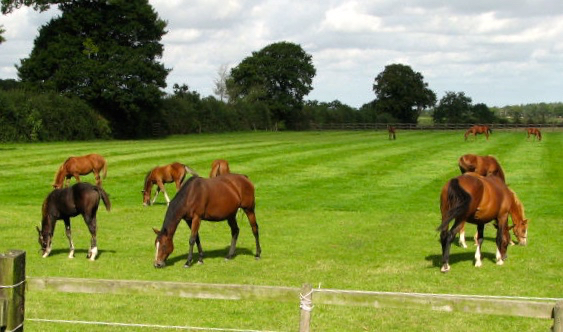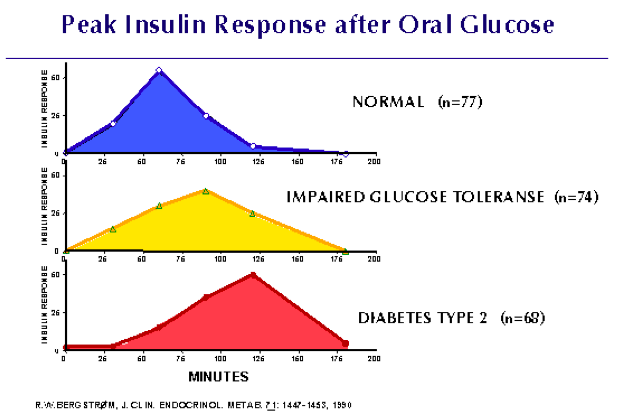
WHY STUDS SHOULD FEED LESS STARCH
For the past few years carbohydrate intake in pregnant mares and their offspring has attracted intense research interest because of its influence on Insulin Resistance (IR) and the link between IR and developmental orthopaedic disease in young horses.
The horse’s diet comprises a range of different carbohydrates. Some of these including starch, fructans in pasture plants, simple and complex sugars, come mainly from the internal contents of plant cells. These are digested primarily by enzymes in the small intestine. They are grouped together as Non Structural Carbohydrates or NSC.
The remaining plant carbohydrate is the cell wall fraction composed of longer chain molecules such as Cellulose, Hemicelluloses and Lignin, plus pectin and gums. These are the Fibre portion of the plants and are digested by microbes in the large intestine.
The critical distinction between these two broad categories is that digestion of NSC produces glucose, whereas digestion of fibre produces Volatile Fatty Acids as the energy yielding product.
The Insulin Response
When glucose enters the circulation from the gut, the blood glucose level rises triggering release of the hormone insulin from the Pancreas. The raised blood insulin causes glucose to be absorbed by cells such as muscle cells which either use it as an energy source or store it. Surplus glucose can be converted to fat. As blood glucose is used up, the level falls and the stimulus for insulin release wanes. Within a couple of hours following a dose of glucose, both will normally return to resting levels.
When high levels of starch or sugars are constantly fed this normal cycle of rising blood glucose followed by the insulin response can become blunted by overuse. If the blood glucose remains high, insulin also remains high. The body’s cells become refractory to it and no longer respond normally. This is Insulin Resistance or IR and is similar to Prediabetes which can progress to Type II Diabetes in humans.

Note that as the condition progresses the peak shifts to the right indicating a longer time for insulin to rise and blood sugar to fall.
Why is this of concern on stud farms?
Because Insulin not only impacts on blood sugar control but also plays a role in the growth and maturation of bone and cartilage and therefore influences Developmental Orthopaedic Diseases such as OCD.
Research in this country and overseas has demonstrated a strong link between IR in pregnant mares and their foals. IR foals are significantly more likely to suffer from OCD as weanlings and yearlings. Foals from IR mares may be IR themselves at birth or shortly thereafter. Mares which have been IR during one pregnancy are likely to be IR in subsequent pregnancies. Pregnancy itself may make mares more susceptible to becoming insulin resistant and this syndrome known as “Gestational Diabetes” already well known in humans is now recognised in mares.
By reducing the starch and NSC content of the diet of pregnant mares we seek to limit the incidence and severity of IR in them and their foals, and thereby reduce the likelihood of those foals suffering from OCD. With around 25% of Australian Thoroughbred yearlings affected by OCD any measures we can take to reduce the incidence is worthwhile from economic, performance and welfare perspectives.
What are Low Starch feeds made from?
The starch and NSC content is reduced by lowering or removing grains and grain by products and substituting fat and soluble fibre as alternative energy sources. These feeds contain raw materials such as sugar beet, soy hulls, Lucerne meal, lupin and vegetable oil to provide energy without generating glucose and stimulating the insulin response. Typically they have an NSC value of below 20% against traditional grain based feeds with NSC values at least double that, but maintain similar values for total Digestible Energy.
Other potential advantages of starch feeding
The gut Microbiome of horses evolved to handle large amounts of fairly low quality high fibre feeds. Starch and sugars , especially in large amounts tend to stimulate the growth of acid and gas forming bacteria in the hind gut and reduce the overall diversity in the microbiome. Digestive efficiency seems to be linked to this diversity and we know for example that the degree of diversity declines in older horses which is probably why their digestive efficiency also tends to decline with age.
By removing some starch from the diet we promote a more diverse microbiome and in particular help promote the population of fibre digesting microbes. This is the natural way the horses gut evolved to work and enabling better fibre digestion may help overall digestive efficiency. In other words, the guts work better and the horse extracts more nutrition from its diet. The high quality protein in raw materials such as lupin may also help stimulate beneficial microbial populations in the hind gut. Preliminary feedback from some studs which have switched to low starch feeding indicate that they use less hard feed to maintain growth rate and condition in weanlings and yearlings.
So, low starch feeding offers the promise of not only reducing levels of OCD in young stock but also of getting more bang for the feed buck at the same time. And that’s why studs really should feed less starch.
